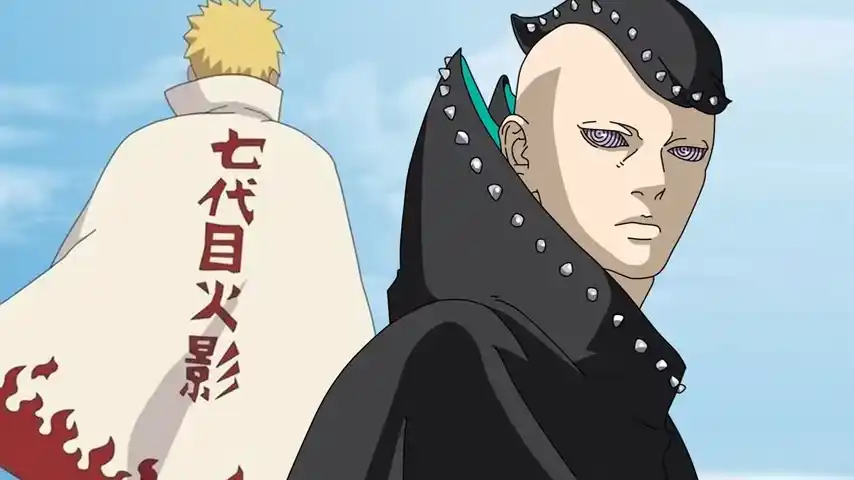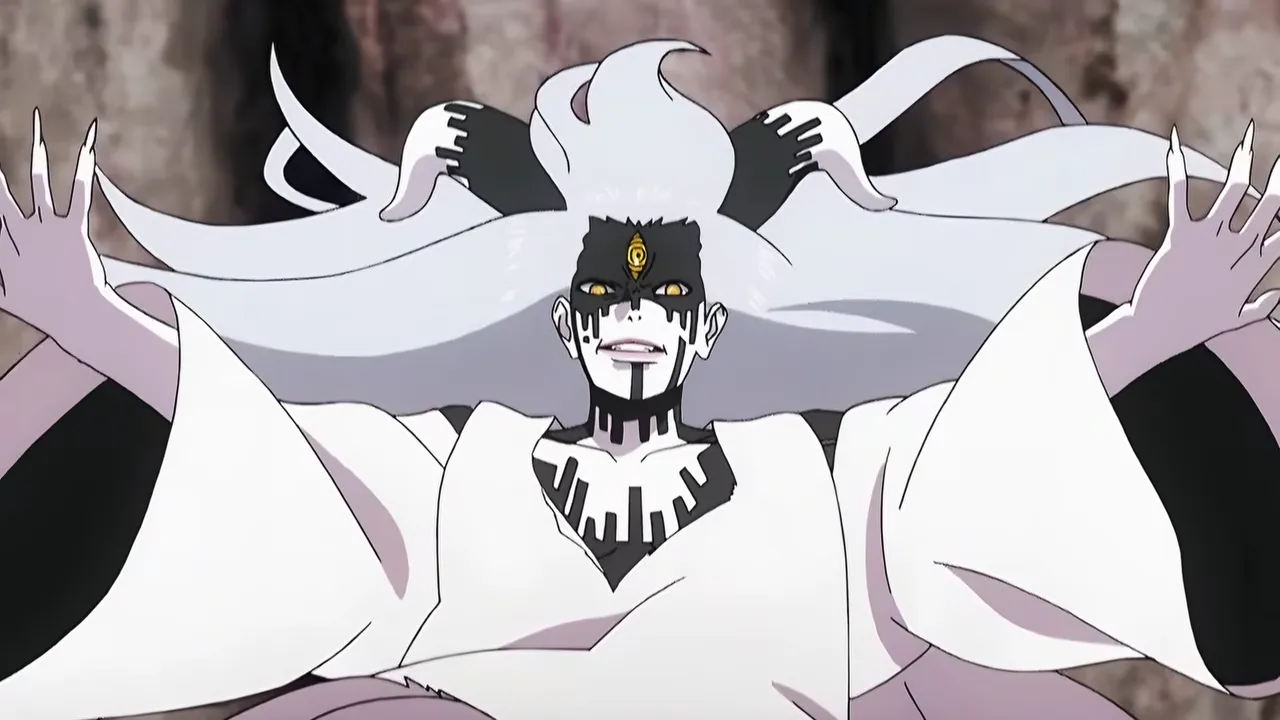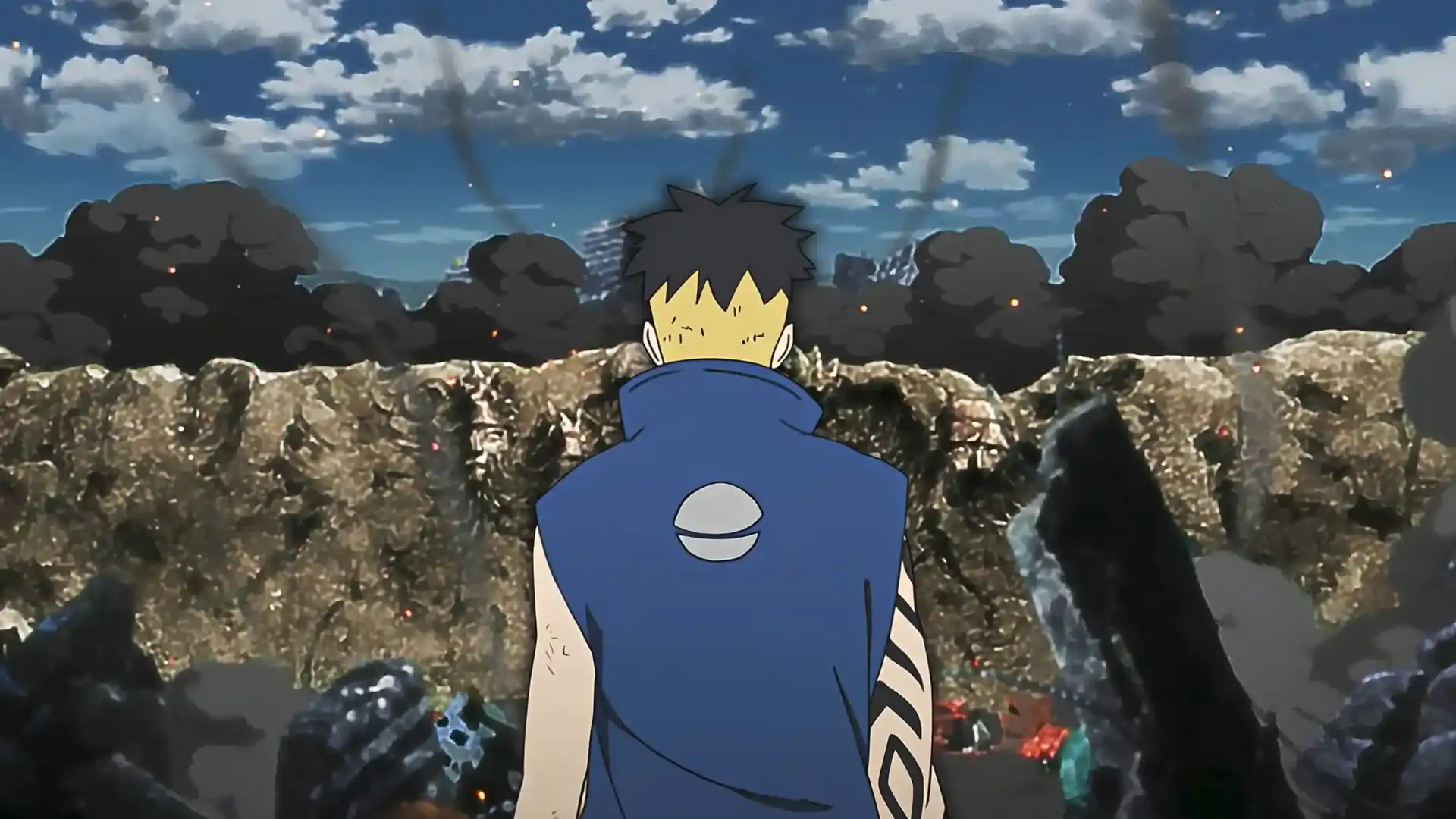The Four Pillars of Boruto Two Blue Vortex

Power, Legacy, and the Future
At the heart of the coming changes stand four key figures: Sarada Uchiha, Kawaki, Himawari Uzumaki, and Boruto Uzumaki himself. They are not just heirs to great clans but also to mighty eyes. They are the living embodiment of evolution — a synthesis of blood, chakra, and will — creating something entirely new.
Each of them carries the potential not just to protect the world, but to alter its very laws.
Chapter 1: Sarada Uchiha – The Sun That Disperses the Curse of Hatred
The Uchiha clan’s history has always been written in blood and tears. Awakening the Mangekyō Sharingan traditionally required a brutal sacrifice — the death of one’s closest person. That path, soaked in pain and hatred, led to incredible power, but at an unbearable price. This major turning point is explored in greater detail in the chapter review Boruto Two Blue Vortex Chapter 20 – Because of Love.
Madara, Obito, Itachi, Sasuke — they all walked that dark road. But Sarada Uchiha, Sasuke’s daughter, broke this horrifying tradition, and it is in breaking it that her greatness and uniqueness lie. Her Mangekyō didn’t awaken from seeing the lifeless body of a loved one but from unbearable emotional agony — the moment the entire world, including her own father, turned against Boruto.
This wasn’t just fear of loss. It was an all-consuming feeling of helplessness, when reality twists before your eyes, when the people closest to you suddenly feel like strangers, and the truth you know in your heart is declared a lie. Sarada didn’t face death — she faced the total betrayal of the very concept of peace and justice.
That existential pain, that soul-deep scream refusing to accept madness, became the catalyst.
Emotional Impact: This marks an incredibly powerful and important shift in the story. Kishimoto and Ikemoto are showing us that Uchiha power doesn’t have to be born from hatred and loss — it can also be born from desperate, overwhelming love and the need to protect. This is the purification of the clan’s curse.
Sarada is the first Uchiha of a new era, whose strength is built on light instead of darkness. Even the design of her Mangekyō is a statement. Instead of ominous, curved tomoe or shuriken shapes, we see the perfect symbol of the sun. That’s no accident. As noted in the Sasuke Retsuden novel, Sarada has been into astronomy since childhood. She saw stars not as cold points of light, but as symbols of something greater. Her dream of becoming Hokage is the dream of becoming Konoha’s “sun,” warming and protecting everyone. Her dōjutsu is a direct reflection of her soul.
Abilities:
- Ohirume: Named after the sun goddess Amaterasu, this technique isn’t just a variation of her father’s and uncle’s black flames. Instead, she creates miniature black spheres with immense gravitational pull. These spheres, called Yūsei in the manga (“wandering star” or “planet”), attract and literally annihilate both matter and chakra. This is power on the level of creating and controlling celestial bodies.
- Flight: Sarada can levitate, putting her in the same league as powerhouses like Jura and Kawaki, and allowing her to fight as an equal in three dimensions.
Possible Future Developments:
- Defender Susanoo: Instead of a purely destructive avatar, her Susanoo might have unique defensive properties — maybe creating gravitational fields to repel any attack, or trapping enemies in unbreakable spheres, like a “planetary prison,” reflecting her desire to save, not just destroy.
- Solar Susanoo: Instead of the typical dark purple or blue, it could be gold or fiery red, like the sun. Its weapon might not be a sword or bow, but a glaive that emits concentrated gravitational waves or pure solar energy.
- Genjutsu of Truth: Instead of creating illusions like Itachi, or controlling will like Shisui, her genjutsu could force the opponent to feel another person’s genuine emotions. Imagine a jutsu that could make Sasuke experience the depth of her despair that day, or force an enemy to truly comprehend the pain they’ve caused.
Her battle against Hidari, her “clone-reflection,” will almost certainly be the moment we see her Susanoo awakened — not just a fight, but a clash of two Uchiha ideologies: the old, shaped by Sasuke’s power, and the new, born from Sarada’s will.
Chapter 2: Kawaki – Vessel of Divine Legacy and Tragedy
If Sarada’s path is evolution through will and emotion, Kawaki’s is evolution through direct inheritance of divine power. His dōjutsu, Kōkugan (“Black Eye”), as revealed in official data sources, wasn’t awakened by him — it was given to him, imprinted into his being along with Isshiki Otsutsuki’s Karma.
That makes Kawaki a deeply tragic and complex figure. The Kōkugan is the eye of Shibai Otsutsuki, a being who attained godhood and transcended into a higher dimension. Kawaki is the bearer of a god’s power, but with the mind and heart of a human scarred by a brutal childhood. His desire to protect Naruto at all costs is sincere, but the methods dictated by the Otsutsuki’s power are extreme and ruthless.
The Kōkugan’s design — a Dharma Wheel with eight spokes — isn’t just aesthetic. It references Buddhism’s “Noble Eightfold Path” leading to Nirvana, liberation from the cycle of rebirth. Shibai reached this “Nirvana.” Isshiki sought it. And Kawaki, without even realizing it, holds the key.
Abilities:
- Sukunahikona: Instantly shrinking himself or inanimate objects.
- Daikokuten: A pocket dimension where time doesn’t flow, used to store shrunken objects — the ultimate weapon to remove any threat instantly.
The power of his eye grows from a single spoke to eight, symbolizing full mastery.
Kawaki is a dark mirror for Boruto. One inherited his power, the other received it through the curse of Karma. One wants to freeze the world to preserve what he loves, the other is ready to race through the storm to find a new way.
Possible Future Developments:
- Yin-Yang Conflict: The Kōkugan and Boruto’s Jogan might be two halves of a whole — one representing absorption and stasis, the other perception and flow.
- Awareness and Redemption: If Kawaki realizes his methods only lead to destruction, he could turn the power of the Kōkugan toward creation instead of destruction, perhaps using Daikokuten to evacuate people or create temporary shelters.
Chapter 3: Himawari Uzumaki-Hyūga – The Rebirth of the Nine-Tails and the Golden Byakugan
For a long time, Himawari was a secondary character. Everything changed when it was revealed that Kurama didn’t die — he was reborn inside her. This isn’t a standard jinchūriki situation. This is something unprecedented. Himawari and Kurama are not jailer and prisoner — they are one, a complete symbiotic being. Kurama even refers to her as a unique existence.
This means Himawari is no longer purely human. She’s now a hybrid of human and Bijū at the most fundamental level, pushing her potential — inherited from both the Uzumaki and Hyūga clans — to a godlike tier.
Byakugan Evolution: The Byakugan already surpasses the Sharingan in detecting genjutsu, seeing chakra circulatory systems, and pinpointing tenketsu strikes. Now imagine it enhanced by Kurama’s limitless chakra and Six Paths Sage Mode energy. Himawari could observe entire continents and even track Otsutsuki beyond the planet. This extraordinary awakening is vividly shown in Chapter 10 (Boruto Two Blue Vortex Chapter 10 – Kernel), where Sarada faces Hidari and Himawari unlocks Kurama’s power.
Regeneration and Defense: Her fusion with Kurama could make her practically invincible.
Baryon Mode as Standard: Unlike Naruto, Himawari could use Baryon Mode without risking her life.
Possible Development – The Golden Byakugan:
This ultimate form, referenced in movies and linked to the Otsutsuki, could grant control over life force itself. She could master the Gentle Step Twin Lion Fists, enhanced with Kurama’s chakra, draining life itself from opponents.
Himawari isn’t just the main hero’s sister — she’s the hidden ace, the living embodiment of life force and the combined legacy of both parents.
Chapter 4: Boruto Uzumaki – The Eye That Sees Fate
At the center of it all is Boruto, whose dōjutsu, the Jogan (“Pure Eye”), remains the series’ greatest mystery. Its awakening is tied to the opening of dimensional gates, not emotional stress. The first time it appeared was when a portal opened for the Nue, meaning the Jogan is the key to understanding the Otsutsuki and space-time mastery.
Kashin Koji’s silence on the matter is deliberate. He knows Boruto’s mastery must come through his own experience and fears that revealing too much could alert Momoshiki.
Potential Abilities:
- Vision of Fate: Like Momoshiki, Boruto might see fragments of the future — but also influence them.
- Anti-Otsutsuki: The Jogan might purify or neutralize Otsutsuki power, breaking the cycle of reincarnation.
- Dimensional Mastery: With full control, Boruto could travel between dimensions effortlessly and create devastating techniques like an Uzuhiko Rasengan fueled by planetary energy.
Boruto’s mission isn’t just to protect the world but to find a new path that ends the Otsutsuki’s cycle of conflict and consumption.
Finale: Symphony of the New Era
Sarada, Kawaki, Himawari, and Boruto aren’t four separate stories — they’re four movements in one grand symphony. They complement each other:
- Sarada: Tactical genius and defender.
- Kawaki: Ultimate weapon with spatial abilities.
- Himawari: Endless source of life and chakra.
- Boruto: The key who guides them through fate’s maze.
Together, they are the branch of evolution where Uchiha power is born from love, Otsutsuki legacy turns to protection, Bijū might fuses with humanity, and the Pure Eye carves a new path. Only together can they save the world, becoming the true “Blue Vortex” that clears the skies for a new dawn.
If you enjoyed this deep-dive analysis, share your theories: Whose potential excites you most? Do you believe in the Golden Byakugan theory for Himawari? Will Boruto and Kawaki reconcile or inevitably clash? And what will be the Jogan’s ultimate purpose — destruction or salvation?






